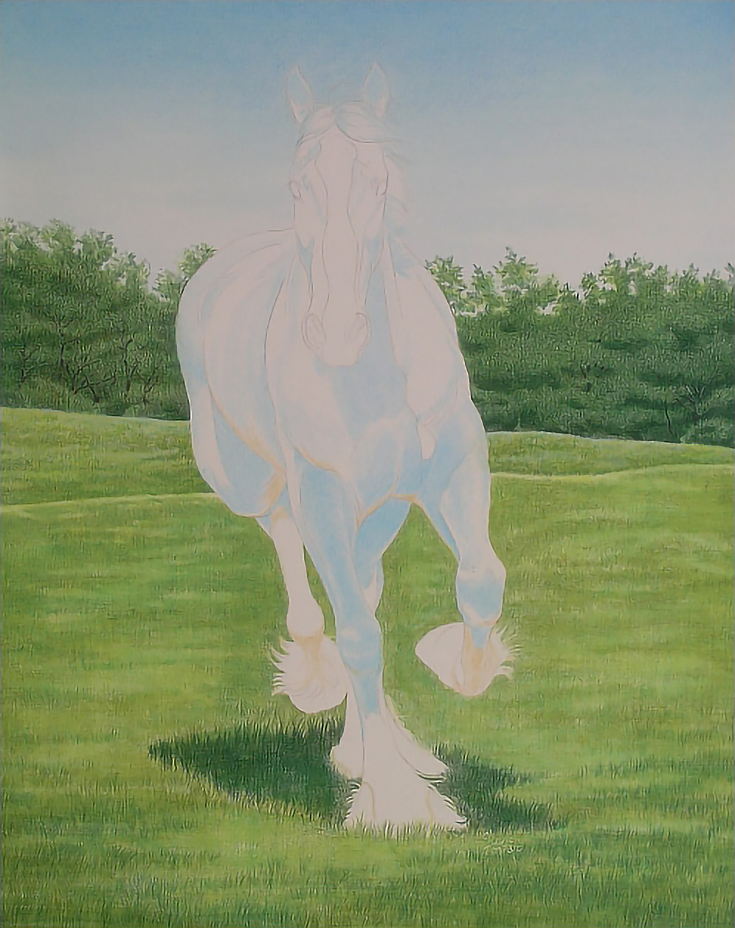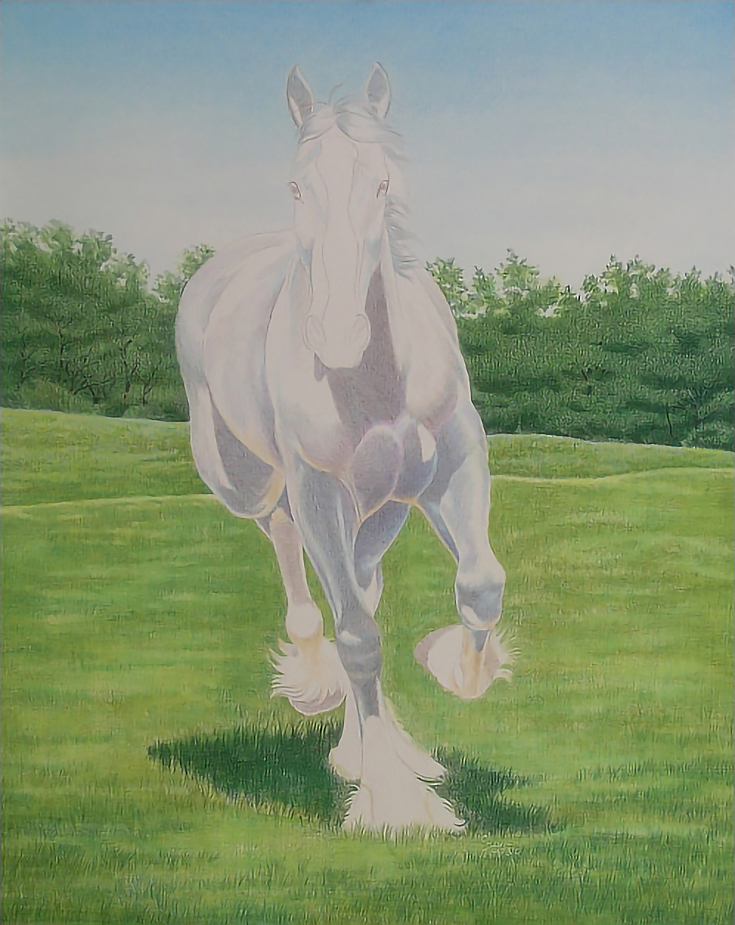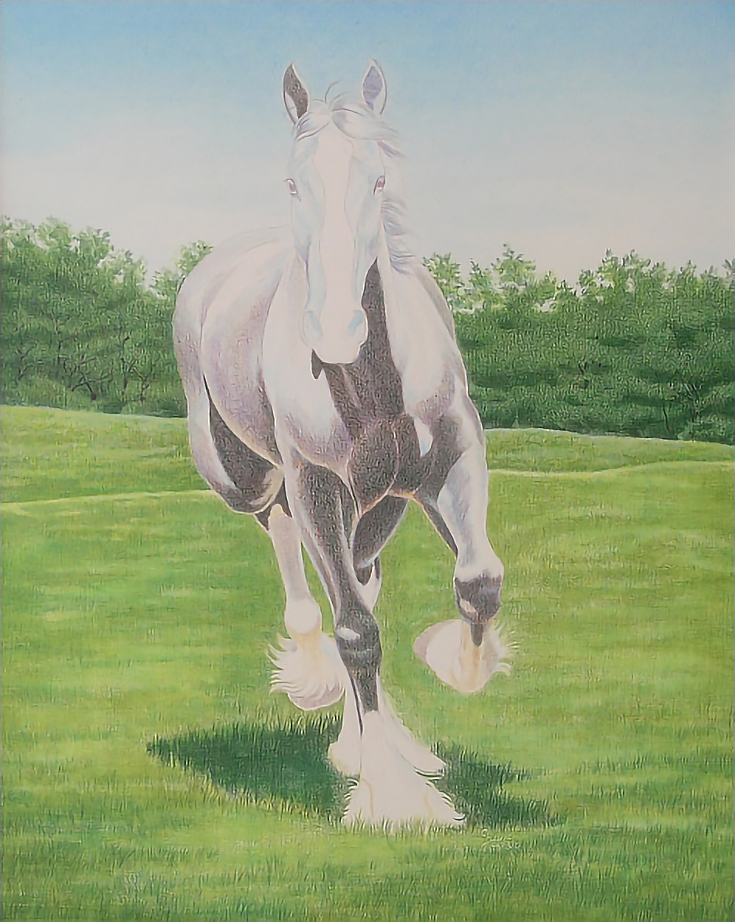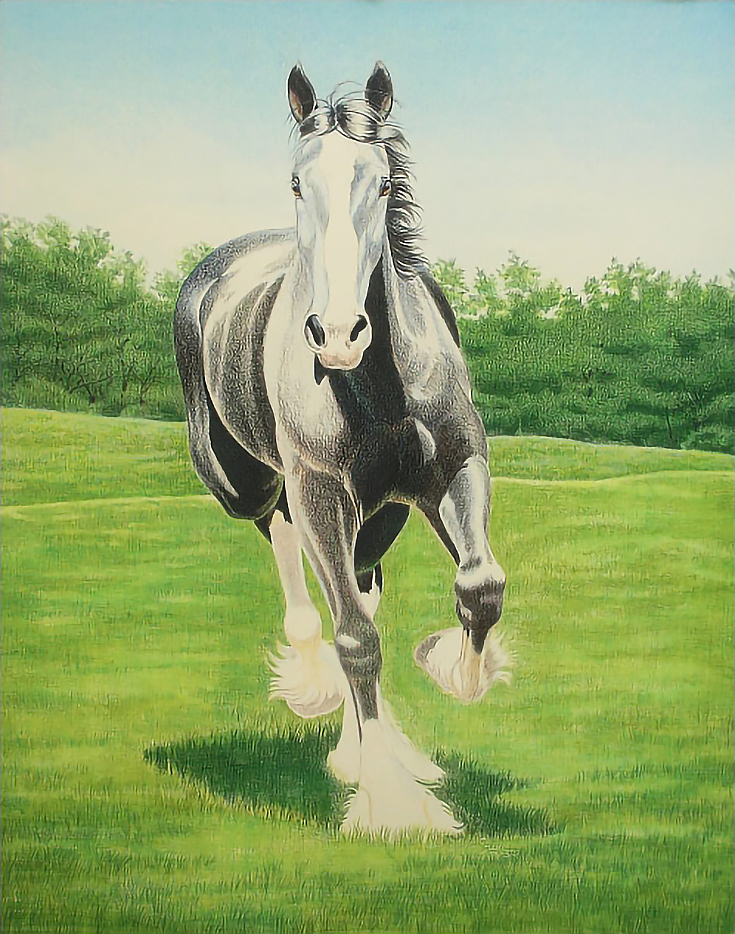When it comes to creating convincing, dark black hues with colored pencils, it’s very important to do more than just use the “black” colored pencil out of the box. Without exception, those will just give you a flat, lifeless black.
In fact, I’ve found that layering many different colors—including black—is the only way to get a dark, realistic black color that looks like it’s actually part of the drawing.
Why does the color black matter so much?
Because animals and other living things come in a wide range of blacks. Some will be warm black, which tends toward brown. Others will be cool black and tend toward blue. Using just a black pencil to draw these various shades of black will never depict the rich color needed to render your subject realistically.
If you’re unsure about the color temperature of the black you want to draw, look at it in direct sunlight. Are the highlights blue-ish? If so, include more blues, greens, and lavenders in your palette. If, on the other hand, the highlights are more golden, choose more earth tones and golds in your selection of pencils.
Believe it or not, you will use colors from every part of the color wheel no matter what shade of black you’re drawing—the important thing is to be aware of the color temperature of your subject and select your colored pencils accordingly.
Today’s demonstration is the first installment in a two-part series showing you the techniques I used to draw a black horse. As you’ll see below, both the background and foreground have already been completed (well, as much as possible until I finish the horse) so we can focus on the parts that matter most to this tutorial.
NOTE: At the beginning of most drawings, I use Prismacolor Verithin pencils because they have a harder lead than Prismacolor Thick Lead pencils. These pencils will hold a point longer, and if I need to lift color, it’s easier with Verithins. Any combination of hard- and soft-lead pencils can be used in the same way.
OK, let’s get started!
1. Create your basic shadows and middle values
Regardless of the shade of black I’m drawing, I almost always begin with a blue under drawing. Here, I started by shading Verithin Non-Photo Blue into the darkest shadows. To get a light, even color, I used the side of a well-sharpened pencil and held the pencil nearly horizontal, letting it’s own weight apply the pressure. For the most part, strokes followed the form of the horse, but I also varied stroke direction as needed to lay down even color.
I outlined all white markings and areas that showed reflected light, and shaded around them. After the shadows were shaded, I added a second layer of Non-Photo Blue over them. I also worked into the lighter shadows and darker middle values to begin establishing values and create form.
Next, I shaded Verthin goldenrod into the reflected light areas on the lower surfaces of the leg joints, belly, and chest. I used the same technique described above to create an even color layer. Goldenrod was added in areas that will be white, as well as those that will be black.
Finally, I added a third layer of non photo blue, but worked throughout the mid-tones, leaving bare paper only in the highlights and reflected highlights.
2. Add any cast shadows
Dark Umber was layered first into all the cast shadows, then over the cast shadows and some of the middle values in all areas of the horse. I also put the first color into the eyes and hooves. I used the point and sides of the pencil with a variety of strokes to get the look and coverage I wanted. I also outlined the highlight over the horse’s hip so I wouldn’t inadvertantly shade color into it too soon.
I followed that with a layer of Parma Violet in the cast shadows, which are the darkest and boldest on the horse.
3. Darken your shadows and middle colors
In this step, I glazed Violet over the shadows and darker middle values, including some of the reflected light areas. I wanted to gray down some of those so they weren’t all the same intensity. After that, I glazed Non-Photo Blue over all of the horse except for the white markings and the brightest highlights.
I also layered Dark Brown, then Black into the shadows using the side of the pencil with each layer, covering as much area as possible with each stroke and attempting to keep the glazes even.
When I was satisfied, I switched to Prismacolor Thick Lead pencils and applied alternating layers of Burnt Ochre and Dark Green over the cast shadows first, then into the middle values. I used a variety of strokes with the goal of getting as smooth a glaze as possible with each color.
4. Work on your details
The final part of this under drawing was the head and neck. I layered Black into the ears and then worked my way down into the rest of the horse. In some areas, like the eyes, the face, the ears, and the long hair, I kept the pencil sharp and used the tip. In other areas, like the broader shadow areas and the middle values, I used the side of the pencil.
Black was followed by Indigo Blue in the same areas and using the same techniques.
Next, I outlined the highlights on the face with Indigo Blue and very light pressure, then shaded around them. When the face was done, I worked down into the neck and shoulders and into the darker shadows.
By now, all the basics are in place. Shadows have been established, highlights have been marked, and I’ve worked on all the major features of the horse, such as facial features and markings. The under drawing is well-developed and ready for me to begin adding depth of color and details.
In part two I’ll show you how to build on this foundation and create a believable and convincing black—stay tuned!
This post may contain affiliate links.





